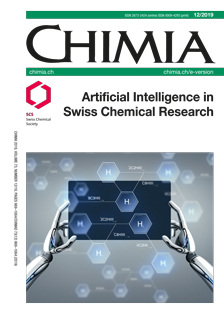Quantum Chemistry Meets Machine Learning
DOI:
https://doi.org/10.2533/chimia.2019.983PMID:
31883548Keywords:
Catalysis, Free-energy landscapes, Machine learning, Quantum chemistryAbstract
In this account, we demonstrate how statistical learning approaches can be leveraged across a range of different quantum chemical areas to transform the scaling, nature, and complexity of the problems that we are tackling. Selected examples illustrate the power brought by kernel-based approaches in the large-scale screening of homogeneous catalysis, the prediction of fundamental quantum chemical properties and the free-energy landscapes of flexible organic molecules. While certainly non-exhaustive, these examples provide an intriguing glimpse into our own research efforts.Downloads
Published
2019-12-18
Issue
Section
Scientific Articles
License
Copyright (c) 2019 Swiss Chemical Society

This work is licensed under a Creative Commons Attribution-NonCommercial 4.0 International License.
How to Cite
[1]
A. Fabrizio, B. Meyer, R. Fabregat, C. Corminboeuf, Chimia 2019, 73, 983, DOI: 10.2533/chimia.2019.983.







